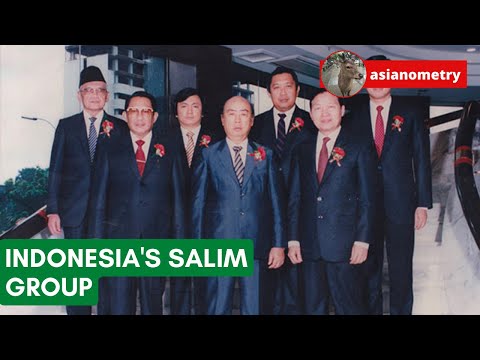Government to Business episode #10: US Federal Reform & digital capability development

Welcome. To government to business the, go-to location for, executives, delivering, digital, services, to business and now. Here's, your host gavin. Atkinson. Gay. Folks and welcome to part 2 of, the. Government to business podcast review. Of the, US federal government's reform plan specifically. Been relating, of course to government, to business digital, service delivery my, name's Gavin atkinson, and last week we talked about the three new program, areas that, were proposed, by the White House to. Improve. The way that the, federal US federal government was dealing with service delivery to business, and, that was about creating a bureau of economic growth, consolidating. And streamlining, financial. Literacy efforts, and streamlining, the, small business programs, that were being delivered and that was all around about bringing, together and consolidating. I'm. Really across all the federal government access, to two grants, technical. Assistance financial literacy, for business owners, contracting. And purchasing, and of course access to capital so. They were very specific from a program, point of view obviously to, what governments delivered a business as, I mentioned to you last week this, information is obviously, top. Of mind if you're within the US federal government but, it's equally, applicable if, you're within the US state. Government system or maybe municipal. Or local government in the US or even tribal, governments because. A lot of the proposals, that, we've discussed in this particular podcast. Series, relate. Not just to the US federal government but they actually flow through very, much to the thinking and way things are being done at a more. Local level within the United States and. On top of that if you happen to be outside the United States a lot of the information that's being provided and, and, particularly, this episode, I think we will find will be highly. Relevant to your, local jurisdiction. So. Last, week as I discussed the, reform areas were, specific, to business customers to government the, next three that I'm going to be talking about today are all about the capability, development across. The whole of the US federal government so they, relate just as much to citizen, related, service delivery but, obviously have a really, really really strong focus as far as the the government to business service. Delivery is concerned as well, the. First one I want to talk about is, a, proposal, called the gear center now, obviously government. We love acronyms so in the US that's no different so gear stands for the government effectiveness, Advanced, Research Center, it. Sounds a bit like the way Marvel Comics or someone would come up with an acronym first and then build the words around it but on them maybe, I'm just being a bit too cynical there anyway. The gear Center is essentially, a public-private. Partnership to. Help government, better respond, to innovative technologies, business, practices, and research. Findings so. The. Big question here is what's the goal what's it trying to achieve and on. What it does it basically presents opportunities. For government to improve its use of public resources improve. The way its delivering, its mission and its services, to citizens. Basically, did you hear that right citizens, what. About business. Now. This is either a dramatically. Missed opportunity, or one of those unfortunately. All too common. Occurrences, that government tends, to fly on default thinking, that citizens, well, you know that kind of includes businesses, as well because you know business owners is you, know business, owners are citizens too aren't they so. But. I think, I'm, specifically. Mentioning, citizens, and not mentioning, businesses, this. Particular proposal misses. Some of the nuances around. How, business, customer, journeys are different how, the legal, structures, and the business process, challenges. That as a result that being presented, to business owners are different and the. Message, that basically, only referring, to citizen sense to executive, decision makers who control budget, resources. And of course strategic, direction so. I do think that's a bit of an issue I do hope it's an oversight, rather than something that's actually being just delivered specifically, for citizens themselves because. I think government, was missing, out on a great opportunity there, if the, actual business custom audience isn't included as part of the scope of work for the proposal, for the gear center so.
Anyway Let's, progress anyway but let's assume that the gear Center includes business, customers, and services in its remit the. Key Center aims to engage. Researchers. Academics nonprofits. In the private sector covering. A whole range of different areas and to be honest a lot of that the big three that they talked about I think, are really really the perfect amalgam. Of where we need to be going across, government. Digital service, delivery at the moment particularly for business and that's all around about behavioral, economics computer, science, and design, thinking, so, it's all around creating, a suppose. A creative, data-driven, and. Interdisciplinary. Approach, to, reimagine. And, realize new possibilities, and how citizens. And government indirect. Is. That word against citizens, sorry. I'm reading. That a little bit from the from the actual the document I just find it's so jarring. Anyway. Let's. Just keep progressing my apologies for that I promise, I won't do it again, to. Fight of exasperating and I'm sure you have this all the time, when you find that your. Particular jurisdiction, if they happen to put out an actual government directional, strategy this, throws, around the citizen word thinking, that that's gonna, catch everybody look use, customer, use client, use whatever you need that's, going to include citizen and business but don't just put the word citizen out there anyway. Moving. On the, the proposal addresses some big-picture issues as well such as assessing, the longer-term, strategic needs, of government and adopting that test and learn approach to innovation and it talks about testing. Hypothesis, rapidly. Developing, prototypes and services, and models and but, better yet it's not just about government getting, up to the same level of innovation. As the PES disposed more innovative, parts of the private sector it's, actually around building. On that and in creating the foundations. For where government, services and operations need to be in five. Years ten years it. Even talks about 20 years time which probably thinks a bit too far over the horizon, that you never know your luck in a big city so. Let's, be honest government does find it hard to focus on the bigger picture for time, frames when often. The the next election, cycle usually, hijacks. Product, development, in delivery, the. Detail on facilitating. All this is is wrap up in issuing, challenges. Under the America, COMPETES Act, in tandem, with an, open request, for information process. So. This is the way that the, US federal, government is approaching, it basically it's a way of supporting. An open, transparent, approach, to. Call on interested, parties to put forward their ideas on addressing challenges with prizes that, may or may not be of margery of nature, another. Interesting side note in the plan is this, particular proposal channeling. The whole nature of bipartisan. As' talking. About the prior approvals, given to the America, COMPETES Act, by both presidents George W Bush and also President Obama so. A long story short the proposal, could, deliver some up some pretty amazing benefits. The way that government addresses the problems of business and how to better deliver to them assuming. A business's, a citizen, of course it's. One of those concepts, where I expect, a significant, variation, will occur so there'll be certain degrees, of success, that. Said it's a far better approach then, just, a simple study if she goes type of philosophy when, it comes to digital service delivery to business. The. Second. Area, that I'd like to talk about is the proposal about strengthening, federal, evaluation. And I really, really love this one a strengthening. Federal evaluation, has its link linchpin, something, dear to my heart and, that's about bringing, evidence to bear in decision making the. This proposal actually pushes. Agencies, to adopt stronger, practices, to create more evidence, about what works and what, needs improvement, to inform. Mission-critical, decisions. And policies now. While, I'm sure we all sign up to this concept, in the digital space particularly. The government to business digital, space it's absolutely. Critical all, of us have at our hands the ability to make a massive, impact the. Nature of the digital channel and when executed, well it's propensity to, achieve channel migration, with massive, time and money savings to both business and government cannot, be understated.
Having. A clear focus, on evidence, and evaluation can. Only strengthen, that channel driving. Resources. From poorly used and, configured, channels read, offline, channels to. Your channel, where you can make it much, bigger impact. Now. Up front this, particular proposal identifies. Presently. A lack of consistency, in support, to agencies, and evaluating. Programs and activities and, again. An olive branch is, embraced, in, the narrative, putting. Out and referencing, the bipartisan, Commission on evidence-based policy making recommendations. And draft legislation. It. Calls on agencies to, start looking, at testing, innovative, strategies, and programs but, having the necessary tools, to, then effectively evaluate, them there's a clear emphasis on, having an accountable, senior official responsible, for the agency's, evaluation activities, and information and evidence, that's reported back to the Office of Management and Budget now. This is great it's, absolutely, spot-on but what it needs to be is a very senior, official so it's taken by seriously. But given the necessary resources. And the support internally. To deliver against, and title. Isn't tied into this requirement, is the. Need to document the resources, that are dedicated to program evaluation as. Without, this it's it's basically practically, impossible to assess where evaluation. Investments, are adequate, or under. Invested, or over invested, I just, love this hotest love it love it if, I can digress although, it's still 100% relevant. The. Fact is the Office of Management and Budget is responsible, for delivering this now, why, should that matter, but. For starters they put out the plan and as they're actually embedded, inside the White House you can bet your bottom dollar that, they're. Basically whatever they ask will. Be acted upon which, is absolutely great putting. Your personal politics, aside it's hard to argue against, a focus on evidence, and investment, in programs that actually work and deliver benefits and. I think the reform plans constant, channeling of president's past both. Democrat, and Republican chose this and it. Should be a focus that truly transcends, politics, regardless, of your own personal, political persuasions.
The. Last thing I'd like to give a hat tip to after. This particular proposal is a recognition, of getting the balance right acknowledging. The risk of establishing, a more formal, structure for federal evaluation, and its potential impact on administrative. Rigidity. The complexity, that could basically detract, from innovation, in the small number of agencies who are excelling in this area. Because. You know without this, particular flexibility. There's a real risk that those innovative, agencies, will be drawn back to a lowest common denominator. Which is just counterintuitive. The. Proposal does flag however, that by mitigating that risk there, needs to be some type of you know green-lighting, flexibility, approach to, recognizing, the unique circumstances and, the capacities, of agencies, and, taking onboard the input from stakeholders so, that that area is a little bit vague but I'm pretty sure that what, they're proposing it is more like you'd have a sigma general, baseline, of measures that would be consistent across all of government and then, anything over and above that is just. You know cream, on the cake so to speak, so. If, they get the balance right this could be a highly. Effective improvement, that really does make a positive impact, on government to business digital, service delivery, by, having the evaluation, processes, and means to, show where, it works where, it works well, the processes. And the ways of delivering it from the customer journey that. Actually, enhanced, the experience and, deliver that value to customers, particularly. In the digital environment over. The more costly, offline, environments. And then to obviously be in a position to, refocus. Investment. Into, those areas actually, deliver those benefits the. Third and the final area wanted to talk on today it's, around customer improvement, capability, so. If you thought everything I've talked about before up to this point of time has great potential you have not seen anything yet a, Keystone, digital element is the proposal for a customer experience improvement. Capability, as I said before in it it sets, a scene of transforming. Government to be far. More modern streamlined, and customer centric and unlike. The gear center it makes it 100 percent clear that this is all about transforming, the customer experience for citizen, and importantly, business, alike another. Aspect I think which is a great approach is how the proposal, sets the office of management and budget with, a leadership, and capability, component, to partner, with federal, agencies this, is the hunt being done with the u.s. digital service in, the General Services Administration's.
Technology, Transformation, service, to, identify key. Stomach groups so a bit of a customer-centric, view of the world they're mapping. Their customer, journeys and an end-to-end process, across agencies. Across programs which is just perfect. As far as things that concern when it comes to creating a seamless government, experience and then, improving that experience, across dinner, the delivery channels and organizational. Silos. Now. I've, kind of restrained, myself from making, too many quotes in today's, episode but I'm going to let, myself off the leash here there. Is this magnificent. Quote that I want to read now which explains, the situation exactly. In the proposal. Within the plan quote, while. Many agencies are taking action, to improve their, services, customer. Experience, can lag when customer, needs and journeys across organizational. Silos, where. As government, agencies execute. Their missions based on their specific authorities. And responsibilities. Customers. Tend to experience government, across stovepipes. So. I think mentioned that last week that's like a agency, silos. I'll. Continue for. Example, while, the federal government strives to support small business growth and competitiveness. Duplicate. Of and, inconsistent. Programs, spread across five different federal. Agencies have. Sometimes created, confusion and extra, work for the small businesses, they mean to serve and quote. Now. Incidentally, this example seems a little bit on in chrome grant and my perspective it's, not effectively, dealt with in the reform paper aside from the three examples I mentioned last week about grants, and capital and procurement, but, a tandem approach of essentially, creating, a center, of excellence to, help support agencies, creating. Incentives for a more holistic customer. Experience, that truly does cut across agencies, and programs while. Building up agency capability, and leveraging. The subject, matter expertise, and back-end, systems, is just, spot-on. The. Alternatives, which is the centralized, approach tends. To create a holier, than the hell type of approach, where. Basically. Agencies. Merely. Pay lip service to, the vision of the central agency but. Try. To do everything they can to do what they like to do themselves and, this. Can be you know pretty ineffectual approach if you're a small agency and you don't have the resources to do. What you really want to do but big well-funded, and resource agencies can, ignore central, activities, at will. So. There needs to be a natural incentive, for them to embrace and, actively participate, in the experience to make sure that overall, ethics, succeeds. When. Fostering a customer-centric, culture is just not enough nor. The flip side of a top-down set, of commands, either of course. Many governments take the easy approach, of setting strategy, and vision and just letting agencies, implement against this against this but, likewise. This really, works as even bigger agencies, ignore, it at will and smaller, agencies, are financial, in and resource, constrained, and find it difficult to meet those requirements and. Fundamentally. It, basically. Reinforces. Those agency, silos, those stovepipes, that we mentioned within the actual plan so.
That Services. Aren't effectively, joined up the, center of excellence approach, provided. It actually is about genuine. Engagement, building, true, collaborative, relationships. Is by far the best way to go if. You're able to throw in some funding, for agencies, evaluate. Of course based on impact, you're. On the path to a screaming. Success, this. Particular, proposal aims to build on the existing work done in the private sector and also the u.s. digital service to, evaluate, how services, are delivered identify. Priorities, and focusing, efforts on customer, centricity and greater, efficiencies. Now. As. I mentioned before I don't like, reading, straight from documents, but the following section of the customer experience proposal. Speaks, volumes, about the US government digital planet, and it really should resonate, equally, with, federal agencies state and municipal, governments in America, looking, for national, leadership and equally and most importantly, if your government is outside, the United States. Because. Of America's, she is size presence. And impact, globally, whatever. It does flows, through to all countries when it provides leadership and, that equally applies to digital government as it does to anything else so, let's. Get to that quote hi but. Prior, to the quote a given, example disguised. At the context of what individual, agencies, have been able to, fully achieve in the customer experience space. And then. It goes on to say. Quite. This. Proposal envisions, building, on these individual. Efforts by adding the capability to tackle, customer experience, challenges throughout, the government to. Get started this capability and relevant agencies will conduct a research to. Identify the most significant, opportunities, for customer, centric change, develop. Customer, journey maps which cross organizational. Silos and then, develop action plans to, execute service. Improvements, as needed. Agencies, would partner, with us, D s and GSA's. Technology. Transformation, service, to enhance their digital services, one. Particular, area focus, would, likely be the creation of the user focused, digital. Front doors. Rebuilding. Government web properties, to focus less on government. Structure, and more. On user experience. Unquote. Now. Those. Last. Few, words at last sentence, is just. Music. To my ears although the whole paragraph, is just, amazingly.
Great, The. Fact that the US federal government is putting, an actual focus, around customer, centricity. Understanding. What the experience, is developing, and mapping out those customer, journeys regardless, of where they are within the organizational. Silos across the federal government and then, bringing it all together into, that customer, centric, view of things through, that user focused digital front door experience, and with. Many, many different ways of saying that in different ways a lot of other agencies, and governments will call it a one-stop shop or whatever like that but. Having that focus around the, customer, themselves. I think is the way to go and I'm very very excited by this. So. Those, are the areas that I've been, want to talk about within the reform plan but this, is actually part two of a three-part series so. Next. Week I'll be going into a, deep dive around. This concept I've talked about that Digital front door because it was a section, of that quote that I left out and that, was the example, site. That the US government, reform plan flagged. As the direct, needed across the US federal government it's. Really, really interesting, and it, has actionable. Insights, for you and your government regardless. Of where you are it's. Going to take a while to get through so again I want to make sure that I break, this up in such a way that you can kind of consume that information at a time that's useful, for you and next. Week we'll get down into the detail, of how this, is going to be implemented, using the examples, of digital front doors across the US federal government my. Name is Gavin Atkinson, this is the government to business, podcast. Please. Feel free to, subscribe. On, iTunes. Or stitcher or, Google Play or wherever you happen to be listening make, sure you write and review and look. Forward to talking to you very very soon, thanks. For listening, to government, to business for show, notes and how Gavin can help your department, or agency, visit. Government. To business comm.
2018-09-23 15:48


